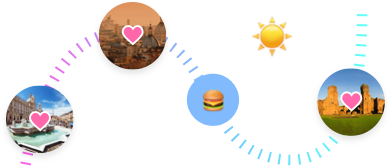



Built in 1880 by the prince Maffeo Sciarra, it is today the most beautiful Art Nouveau building in Rome. The protagonist of the decoration is the Woman, seen as a bride, mother and "angel of the hearth" that is portrayed in different scenes of everyday life. In the upper band are depicted other women who represent the feminine virtues: loyalty, humility and justice.
One of the most beautiful bridges in the world that crosses the Tiber. Ornate and made famous by the statues of the Angels with a history of mystery and death.
The Roman Pantheon is the most preserved and influential building of ancient Rome. It is a Roman temple dedicated to all the gods of pagan Rome. As the brick stamps on the side of the building reveal it was built and dedicated between A.D 118 and 125. When approaching the front of the Pantheon one can see the inscription above still reads in Latin the original dedication by Marcus Agrippa. "M. AGRIPPA.L.F.COSTERTIUM.FECIT” “Marcus Agrippa son of Lucius, having been consul three times made it”.
Not that many visitors know that it is possible to climb up to the top of St Peter’s dome (the “cupola”). Actually getting on top of St Peter’s dome is one of Rome must do, and a great opportunity to enjoy a fantastic and dizzying city panorama all around Rome and to admire a top-down view of St Peter’s basilica nave.
The garden of the Oranges, is one of the most beautiful and romantic terraces in the world.
The Colosseum, originally known as Amphitheatrum Flavium, is the largest amphitheater in the world, located in the center of Rome.